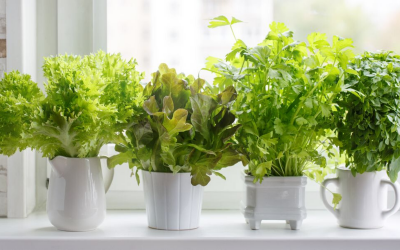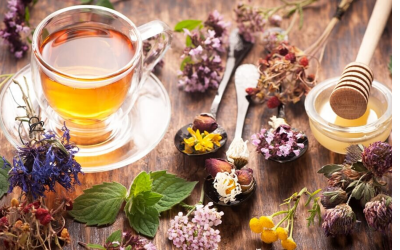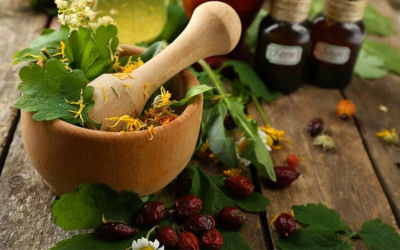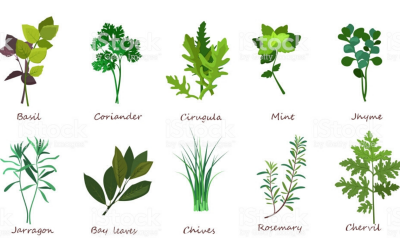Garden Map planting table:
|
Vegetable
|
Planting Times
|
Planting Depth
|
Plant Spacing
|
Good companion
|
Location
|
Harvest
|
Rotate
|
|
Beans
|
Apr/May
|
30mm
|
30cm
|
Potato Pumpkins
|
Full Sun
|
3-4 months
|
Carrots Potato
|
|
Beetroot
|
Aug/Oct
|
25mm
|
10cm
|
Lettuce Onions
|
Full Sun
|
8-9 weeks
|
Onion Potato
|
|
Broccoli
|
Dec/Feb
|
15cm
|
45cm
|
Celery
|
Full Sun
|
10 weeks
|
Celery Onions
|
|
Cabbage
|
Jul-Mar
|
7mm
|
55cm
|
Beans Beetroot
|
Full Sun
|
3 months
|
Celery Onions
|
|
Carrots
|
Aug-Oct
|
7mm
|
5cm
|
Beans Tomatoes
|
Full Sun
|
3 months
|
Lettuce Potato
|
|
Cauliflower
|
Nov-Mar
|
10mm
|
60cm
|
Beans Beetroot
|
Sun / Semi shade
|
4 months
|
Celery Onions
|
|
Celery
|
Sep – Dec
|
10mm
|
60cm
|
Broccoli Cabbage
|
Sun/Semi shade
|
4-5 months
|
Squash
|
|
Cucumber
|
Aug-Dec
|
10mm
|
45cm
|
Beans lettuces
|
Full Sun
|
3 months
|
|
|
Lettuce
|
Jan-Mar
|
8mm
|
25cm
|
Beetroot Cabbage
|
Sun/Semi shade
|
2 months
|
Beans Tomatoes
|
|
Mealie Corn
|
Sep-Nov
|
45mm
|
25cm
|
Cucumber Beans
|
Full Sun
|
2.5 months
|
|
|
Onions
|
Feb-Mar
|
10mm
|
15cm
|
Spinach Tomatoes
|
Full Sun
|
4 months
|
No alliums*
|
|
Potatoes
|
July-Oct
|
70mm
|
20cm
|
Mealies Beans
|
Full Sun
|
5 months
|
Broccoli Cauliflower
|
|
Pumpkins
|
Sep-Nov
|
15mm
|
60cm
|
Mealies Beans
|
Full Sun
|
3 months
|
Carrots Beetroot
|
|
Spinach
|
Sep-Nov
|
8mm
|
10cm
|
Onions Cabbage
|
Full Sun
|
2 months
|
No alliums*
|
|
Swiss Chard
|
Aug-Oct
|
8mm
|
25cm
|
Beetroot Cabbage
|
Full Sun
|
2.5 months
|
Not required
|
|
Tomatoes
|
Aug-Nov
|
7mm
|
50cm
|
Onion Carrot
|
Full Sun
|
2.5 months
|
Beetroot carrot
|
GOOD COMPANION HERBS AND FLOWERS FOR VEGETABLE GARDEN (NATURAL INSECTICIDES and FLAVOUR ENHANCER)
|
Vegetable
|
Herb
|
Herb
|
Herb
|
Herb
|
Fruit
|
Flowers
|
Flowers
|
Flowers
|
|
Beans
|
Chives
|
Parsley
|
Rosemary
|
Marigold
|
Nasturtiums
|
|||
|
Beetroot
|
Parsley
|
Chives
|
Marigold
|
Calendula
|
||||
|
Broccoli
|
Dill
|
Parsley
|
Sage
|
Petunias
|
Chamomile
|
|||
|
Cabbage
|
Rosemary
|
Sage
|
Thyme
|
Dill
|
Geraniums
|
Violets
|
Nasturtiums
|
|
|
Carrots
|
Parsley
|
Oregano
|
Basil
|
Mint
|
Roses
|
|||
|
Cauliflower
|
Dill
|
Sage
|
Petunia
|
Catmint
|
Chamomile
|
|||
|
Celery
|
Parsley
|
Marigold
|
Violets
|
|||||
|
Cucumber
|
Chives
|
Dill
|
Oregano
|
Lemon Balm
|
Nasturtiums
|
|||
|
Lettuce
|
Chives
|
Parsley
|
Strawberries
|
Violets
|
||||
|
Mealie Corn
|
Coriander
|
Dill
|
Sunflowers
|
Nasturtiums
|
||||
|
Onions
|
Strawberries
|
Roses
|
Petunias
|
|||||
|
Potatoes
|
Sage
|
Strawberrie
|
Marigold
|
|||||
|
Pumpkins
|
Garlic
|
Chives
|
Marjoram
|
Oregano
|
||||
|
Spinach
|
Coriander
|
Parsley
|
Chives
|
Strawberries
|
Violets
|
|||
|
Swiss Chard
|
Garlic
|
Strawberries
|
Roses
|
|||||
|
Tomatoes
|
Mint
|
Basil
|
Coriander
|
Chives
|
Marigold
|
* Alliums = Chives, Garlic, Leeks and Onions.
CONTAINER PLANTING
- Old wheelbarrows – Beetroot, Cabbage, Lettuce, Onions, Spinach, Swiss Chard
- Old paint cans – As above
- Old drawers- As above
- Tires – Potatoes
- Any type of container can be used that can hold the weight of the soil.
- ALL containers need holes drilled at the bottom for drainage.
- All Herbs can be grown in containers.
VERTICAL PLANTING
- Gum poles 2.5 meters high and 100mm-120mm thick.
- Screws and washers (to prevent plastic bottles tearing)
- Empty plastic 2 liter bottles ( 8 per pole – 4 on either side)
- String to hold Tomatoes and Cucumbers in planting bags or buckets or drums.
- Vegetables suitable for plastic bottle planting: Runner beans and bush beans, lettuce, spinach,
- Swiss chard and nasturtiums and all herbs.
Dig a hole and bury the pole half a meter deep. Compact the soil very well around the pole with another pole or back of a spade so that it is very sturdy. You will have a pole that is 2 meters high.
Cut the bottom (1/3) of the plastic bottle off. You are left with 2/3 of the bottle and the lid. Drill Holes in the plastic lid for drip irrigation. Fasten lid back on bottle.
Fasten the 4 bottles upside down on each side of the pole with screws and washers. (lid facing the ground) One on top of the other. Divide the spacing equally between the bottles allowing at least 40 cm between the last bottle and the ground.
Make sure the bottles are in a straight line so that the water can drip from one bottle to the next.
Fill each bottle with a mixture of ground soil and compost 2/3 full.
Plant seeds.
Lightly water frequently with a watering can. Water each bottle until the vegetables have germinated and then water the top bottle only allowing the excess water to drip into the bottles below.
Plant tomato and Cucumber under each side of the bottles closest to the ground in 25 liter planting bags or plastic buckets or drums. (2 planters)
Nail Nylon string into the top of each pole and let it hang to the ground. When the Tomato and Cucumber are tall enough, attach the stems of the vegetables with soft wire to the strings and they will climb up the pole.
MATERIALS
Shade cloth for lettuce and spinach if over 24 degrees. Sticks to hold the shade cloth above the ground. The quantity is determined by how many lettuce and spinach beds are planted.
Shade cloth and Hessian are available at builder’s warehouse. Other vegetables might require shade cloth (broccoli and cauliflower) if it is extremely hot between 11h00 and 15h00.
Drill and extension cord for poles. Bags of screws and nylon string determined by the amount of vertical planting you want to do.( builders warehouse)
WATER WISE
- Beds and containers to be watered before 09h00 and after 15h00 in summer
- Beds and containers to be watered after 09h00 so they can have the whole day to dry out in winter.
- Empty plastic 2 litre bottles. Prick bottle in the neck and the shoulder of the bottle. Fill with water. Leave the lid on and bury in the vegetable bed close to the roots of the vegetables.
- In large containers do the same and push right down into the centre of the container and leave the water to seep out. Check if the bottle needs to be filled after 3 days.
- Hosepipe watering. Only water the vegetables and use an adjustable spray attachment to soften the jet of water.
- Make permanent pathways around the vegetable beds and clear beds so that water is only used where necessary.
- Water is scarce and more valuable than gold.
MULCHING
- Mulching is adding organic matter to the surface of the beds.
- It regulates the temperature of the soil like a blanket. It keeps the soil cooler in summer and warmer in winter.
- It saves water and reduces evaporation, keeps the soil moist and reduces weed growth. Weeds compete for water.
- It helps prevent soil- borne diseases and strengthens root growth
- It adds nutrients to the soil and provides food for earth worms.
- Mulch is grass cuttings, cardboard, egg shells, bark chips, winter leaves, newspaper, straw, hay, long cut veld grass and reeds.
- Compost is decayed organic matter
- The compost heap should be in semi –shade (if in full sun, it requires regular watering
- Compost needs to be contained. Use old bricks, building supplies, wooden planks, chicken wire etc.
- 2/3 brown (carbon) – dried leaves, bark, sawdust, straw and twigs.
- 1/3 green (nitrogen)- grass and garden clippings, all vegetable waste from the kitchen
- When starting out, add bonemeal or manure to boost the process. Horse or pig manure NOT CHICKEN MANURE – too acid.
- Turn the pile regularly and add water in the centre if extremely hot.
- Always add to the top and take out from the bottom.
- Fill a drum with water. Half fill a sack with manure.
- Tie the top of the sack with string leaving the ends of the string long.
- Tie these around a strong stake and place it across the top of the drum with the sack in the water.
- Leave it for at least 2 weeks
- Remove the sack and cover the liquid manure.
- Dilute 1 part Liquid manure with 2 parts water and spray onto vegetables.
HAPPY PLANTING!!







0 Comments